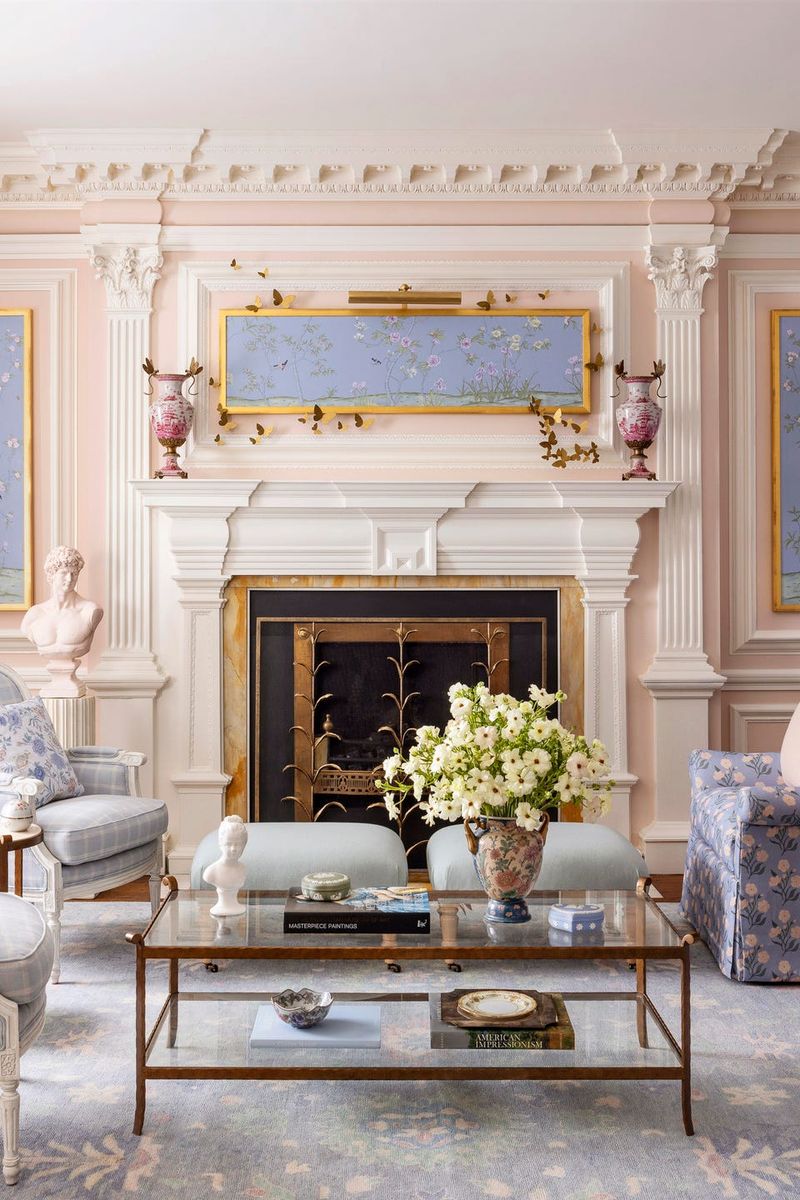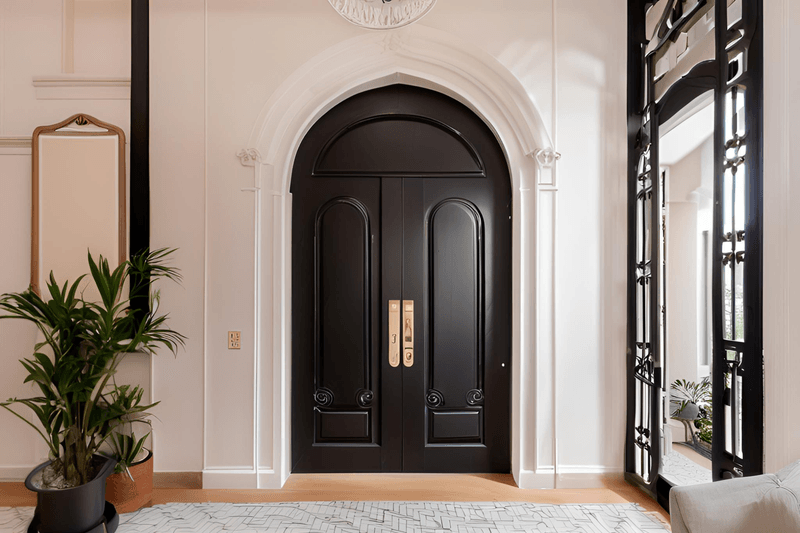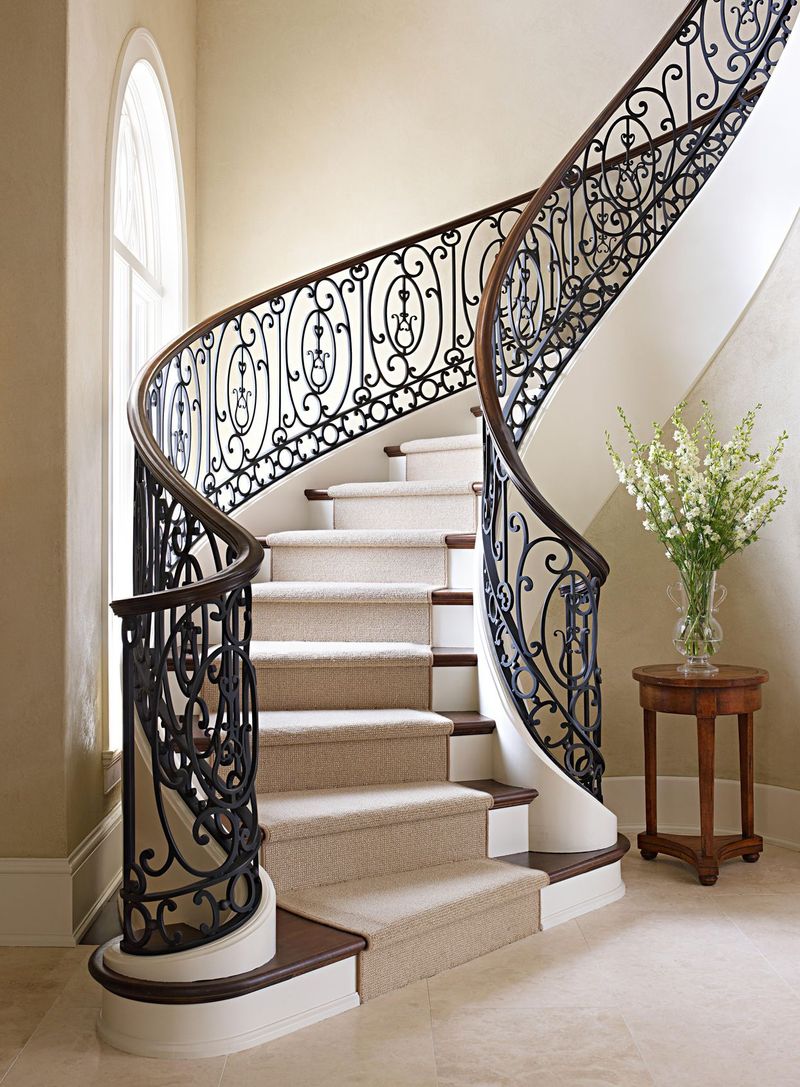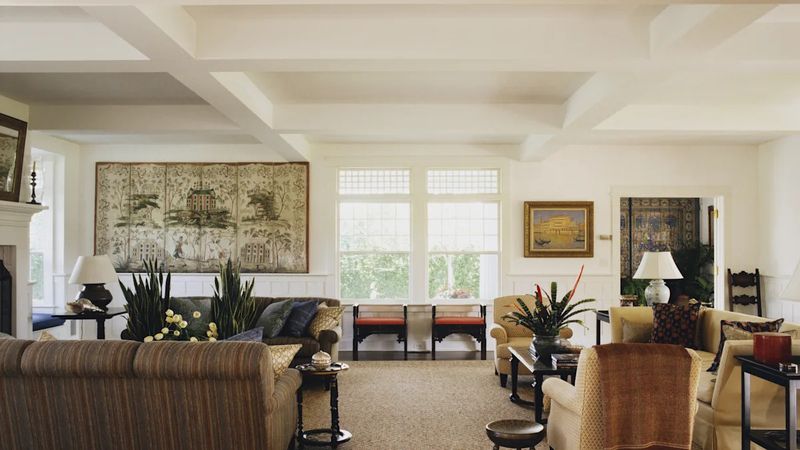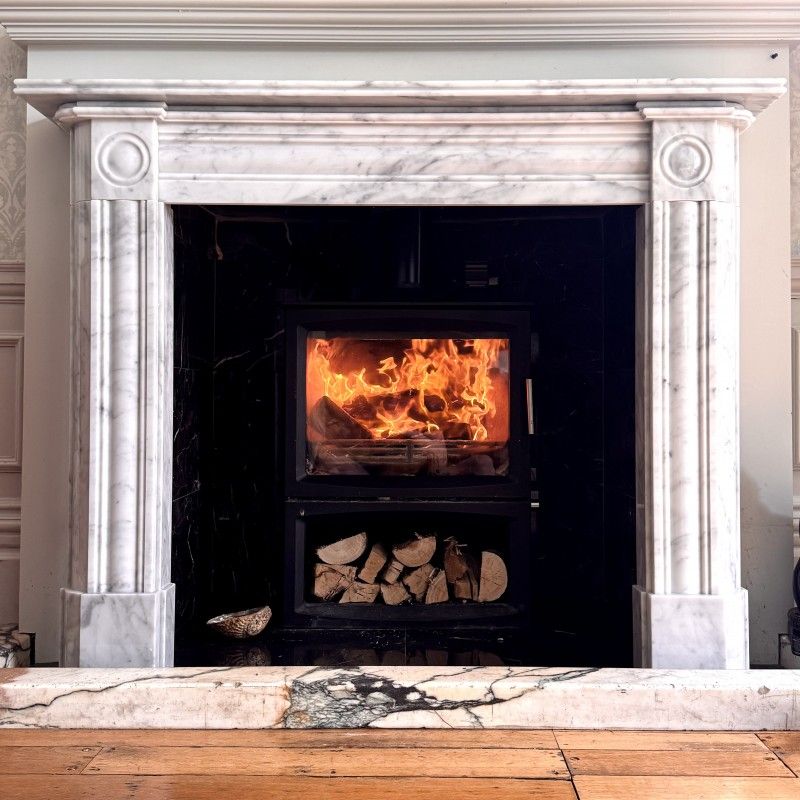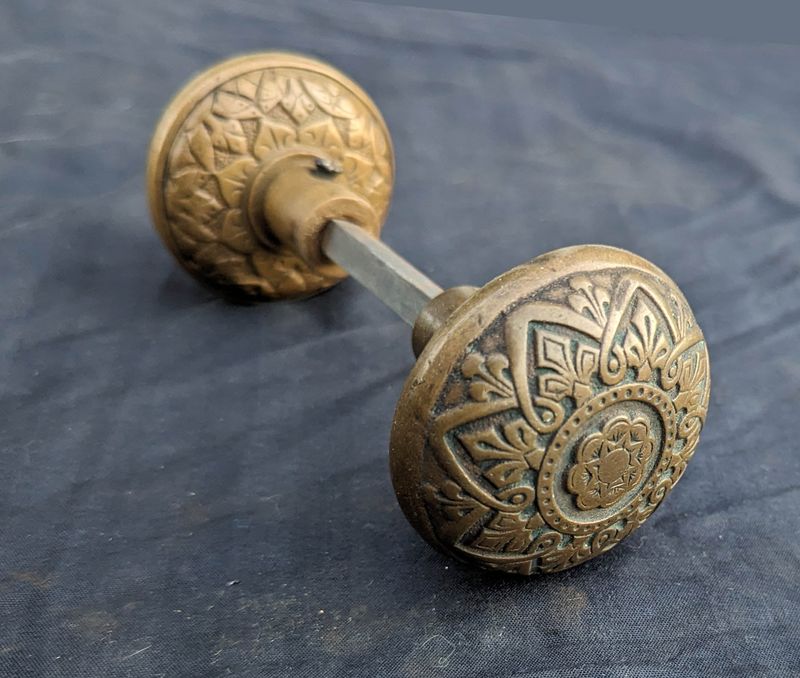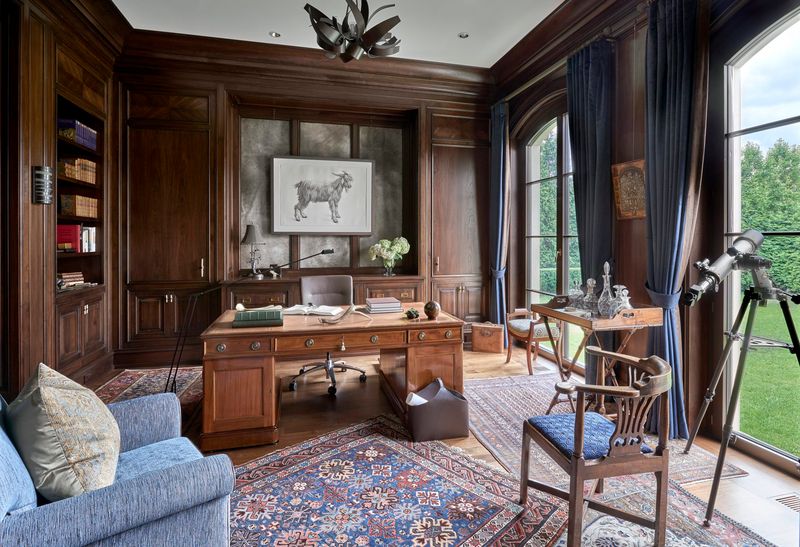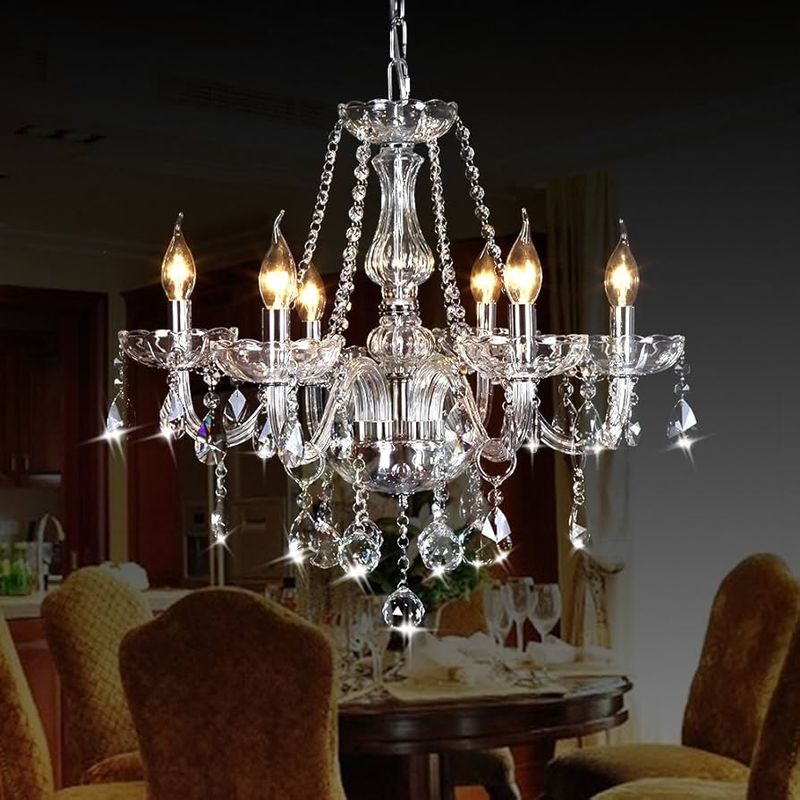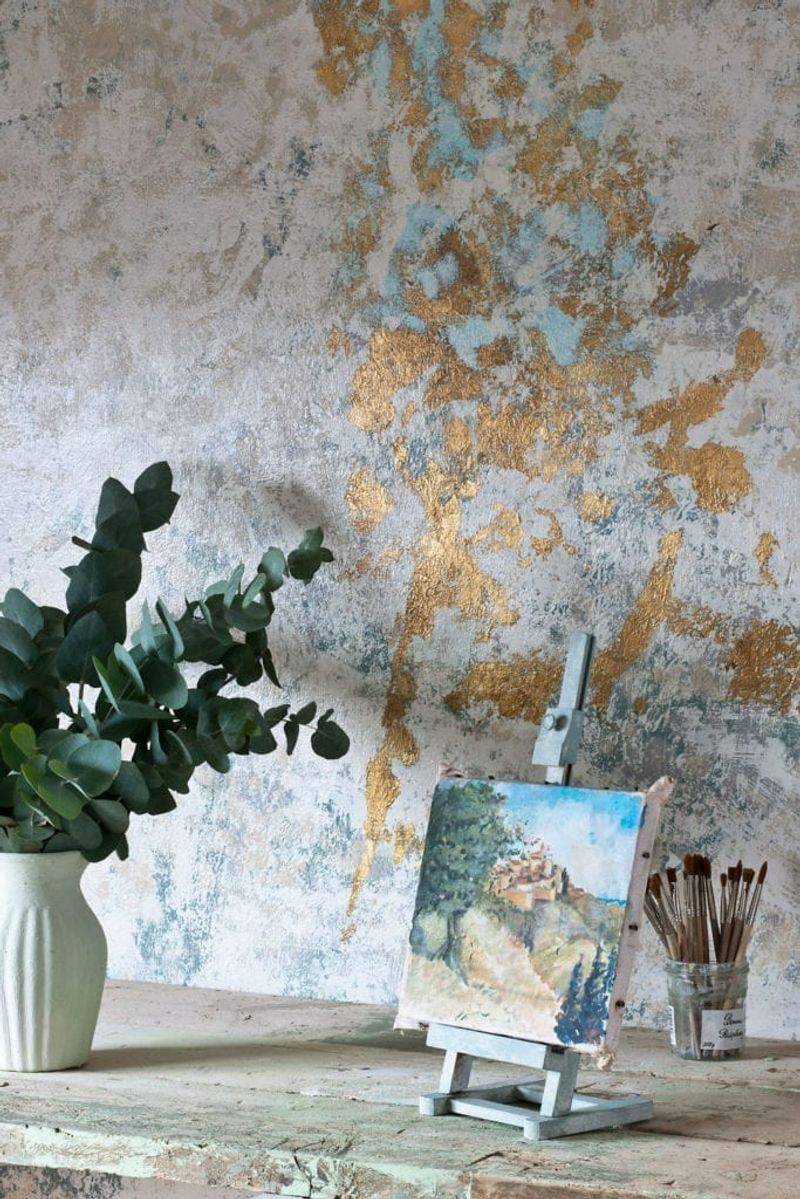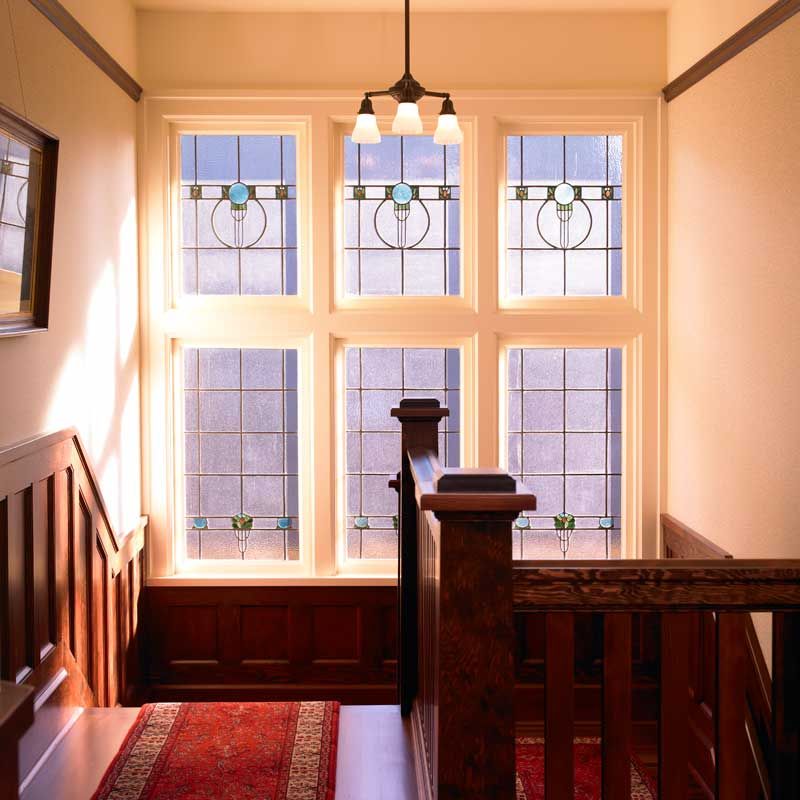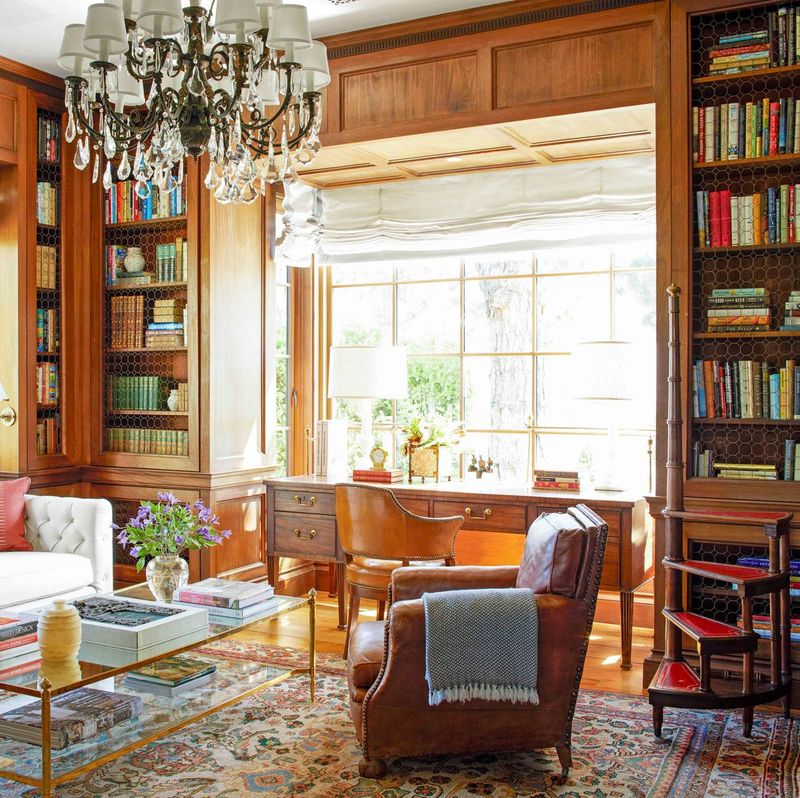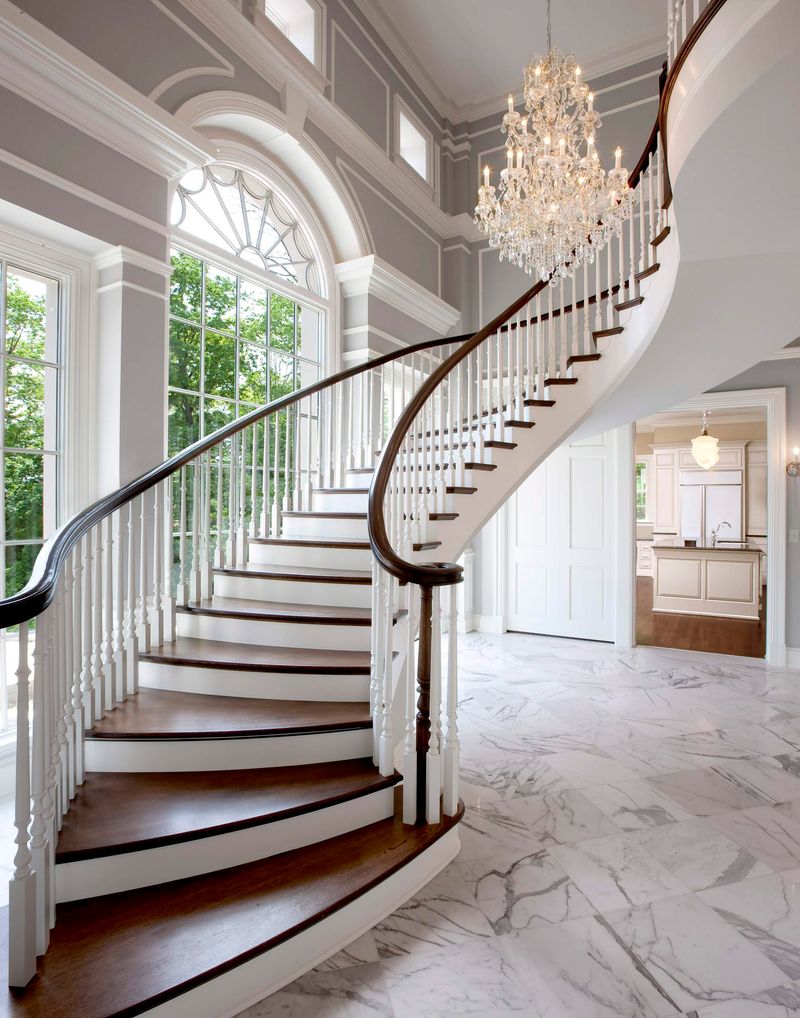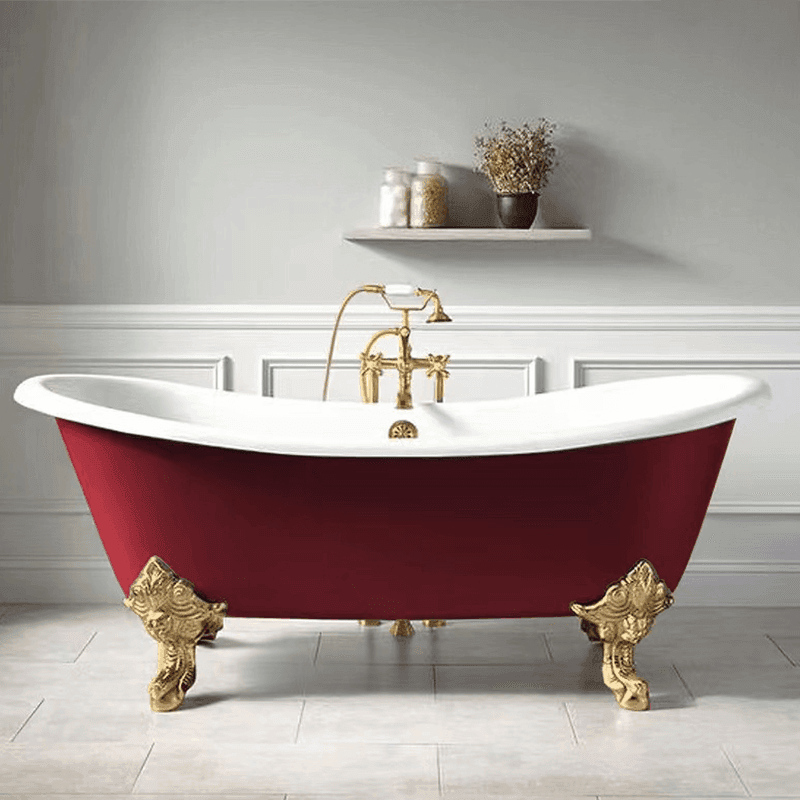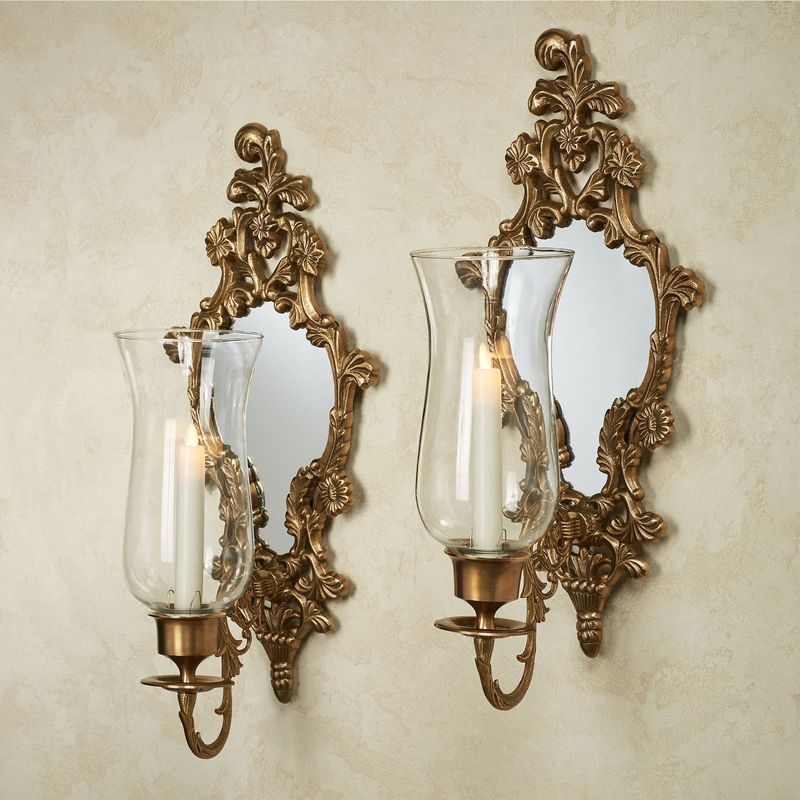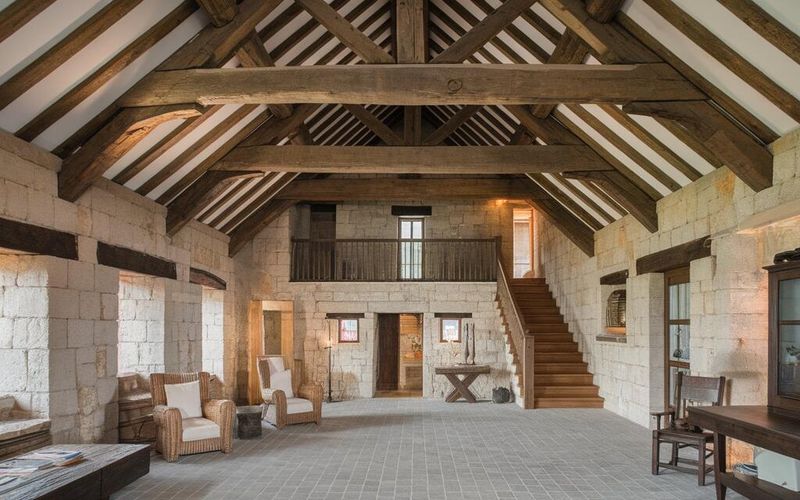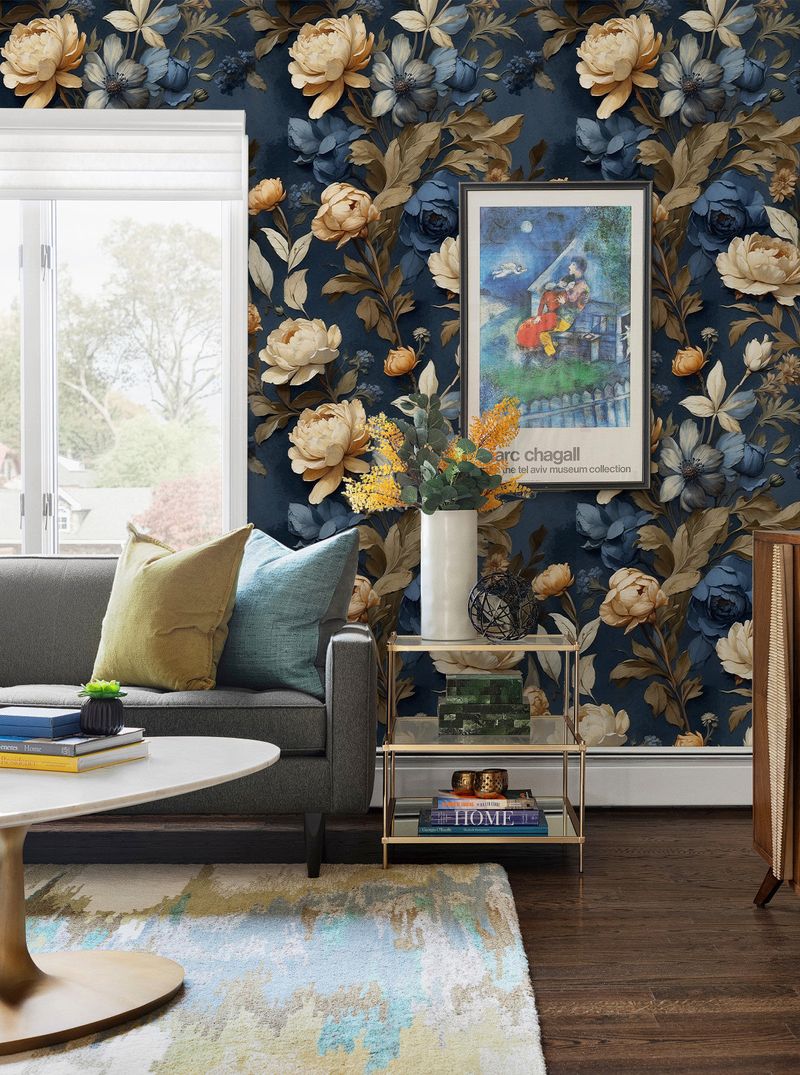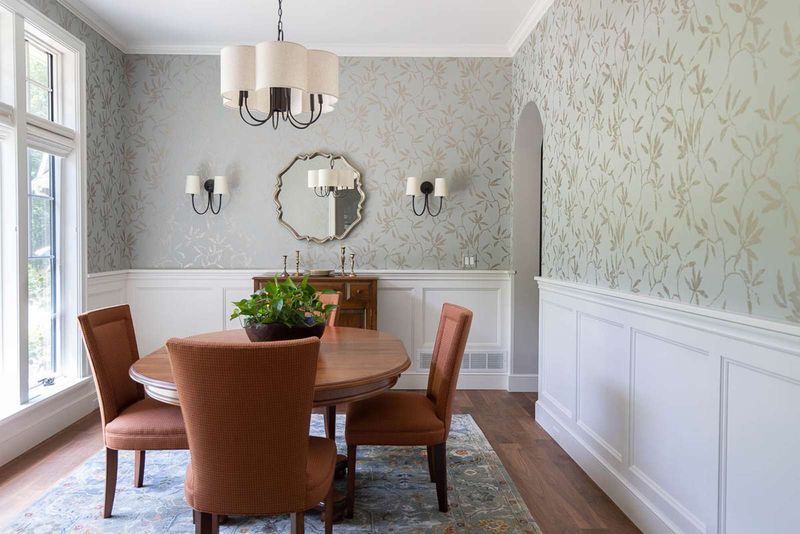Ever walked into a home that instantly transported you to another era? That magical feeling comes from thoughtful design elements that have stood the test of time.
Old-world elegance isn’t just for castles and mansions – it can be incorporated into any home through specific architectural and decorative details.
These timeless features add character, warmth, and a sense of history that modern homes often lack.
1. Crown Molding
Walking into a room adorned with crown molding instantly elevates the space from ordinary to extraordinary. This architectural detail bridges the gap between walls and ceilings, creating a finished, polished look.
Once reserved for palaces and grand estates, crown molding now graces homes of all sizes. The intricate profiles add depth, shadow, and visual interest that flat walls simply cannot achieve.
2. Arched Doorways
Unlike their rectangular counterparts, arched doorways soften transitions between spaces and guide the eye naturally from room to room.
Found in Mediterranean villas, Tudor manors, and Spanish Colonial homes, these curved passages bring architectural interest to otherwise flat walls. Their timeless appeal lies in their ability to frame views and create a sense of discovery.
3. Wrought Iron Railings
Wrought iron work brings that tactile, artistic element to your home that mass-produced alternatives simply cannot match.
Craftsmen have been shaping this durable material into functional art for centuries. Each curl, twist, and scroll tells a story of tradition and craftsmanship. Beyond staircases, wrought iron appears in gates, balconies, and even furniture, adding gothic charm wherever it’s placed.
4. Coffered Ceilings
Look up in homes with true architectural heritage and you might spot a geometric masterpiece overhead. Coffered ceilings divide the overhead plane into a grid of recessed panels, creating depth and dimension where most modern homes offer only flatness.
Originally designed to reduce the weight of stone ceilings in ancient Rome, these architectural features now serve purely aesthetic purposes. The sunken panels can be simple squares or elaborate designs, often highlighted with contrasting paint or decorative moldings.
5. Marble Fireplace Mantels
At the heart of many historic homes stands the ultimate conversation piece—a fireplace crowned with marble. Cool to the touch yet warm in appearance, marble mantels serve as both functional elements and artistic focal points.
Veining patterns tell geological stories, with each piece being utterly unique. While modern alternatives exist, nothing quite captures the gravitas and permanence of genuine marble. These storied surfaces have witnessed countless family gatherings, providing a timeless backdrop to life’s precious moments.
6. Antique Brass Hardware
Your fingers will notice the difference before your eyes do. Substantial brass doorknobs, hinges, and drawer pulls carry a weight and patina that plastic or modern metal simply cannot replicate.
Over time, the living finish develops a character all its own, darkening where hands touch most often. This hardware tells the story of a home’s life through its gentle aging process. Unlacquered brass especially develops a beautiful patina, transitioning from bright gold to deep amber with hints of green.
7. Wood Paneling
Running your hand across the warm texture of wood paneling connects you to centuries of architectural tradition. Far from the cheap veneer of 1970s basements, true wood paneling brings depth, warmth, and acoustic dampening to any space.
Whether it’s the formal elegance of raised panel wainscoting or the rustic charm of board and batten, wood-clad walls create instant character. The natural grain patterns serve as subtle artwork, while the dimensional quality adds shadow play as light moves throughout the day.
8. Herringbone Wood Floors
Beneath your feet lies an opportunity for artistry often overlooked in modern homes. Herringbone pattern floors transform ordinary wood planks into an intricate geometric dance that draws the eye forward.
Dating back to 16th century European palaces, this installation technique requires precision and skill. The angled placement of each piece creates visual movement and interest.
9. Crystal Chandeliers
Sunlight streaming through windows creates magic when it hits a crystal chandelier, sending rainbows dancing across walls and ceilings. These suspended sculptures serve as jewelry for your home, catching and refracting light in ways no modern fixture can match.
Beyond mere illumination, crystal chandeliers become focal points and conversation starters. The gentle tinkling sound as air currents move the crystals adds an auditory dimension to their visual splendor.
10. Plaster Wall Finishes
Forget flat paint—touch a hand-troweled plaster wall and you’ll understand why this ancient technique never truly goes out of style. The subtle variations in texture catch light differently throughout the day, giving walls a living quality that drywall lacks.
Venetian plaster, with its marble dust infusion, creates depth and luminosity that seems to glow from within. These labor-intensive finishes require skilled artisans, making them increasingly rare and precious. Unlike paint, which sits on the surface, plaster becomes one with the wall, aging beautifully over decades.
11. Leaded Glass Windows
Sunlight transforms into an artistic display when filtered through leaded glass windows. Unlike plain panes, these windows feature metal dividers that hold individual pieces of glass—clear, colored, or textured—in decorative patterns.
Dating back to medieval cathedrals, this technique creates privacy while maintaining light flow. The lead lines themselves form geometric or organic designs that become part of your home’s architectural signature. When sunlight streams through, the resulting patterns cast ever-changing displays across interior surfaces.
12. Built-in Bookcases
Before the era of disposable furniture, homes featured architectural elements that stayed put—like built-in bookcases. Unlike their freestanding counterparts, these literary showcases become part of the home’s structure, offering permanence and purpose.
Flanking fireplaces or lining study walls, built-ins provide not just storage but also architectural framing. The craftsmanship details—crown molding, adjustable shelves, cabinet bases—elevate them beyond mere utility. Their presence suggests a household that values knowledge, collection, and display.
13. Curved Staircases
Making a grand entrance becomes inevitable when your home features a curved staircase. Unlike straight flights, these architectural showpieces create drama through their sweeping lines and graceful transitions.
The engineering required makes them true testaments to craftsmanship. Their continuous flow guides movement naturally between floors, creating moments of revelation as you ascend or descend. In entrance halls particularly, curved staircases become sculptural elements that set the tone for the entire home.
14. Clawfoot Tubs
Sinking into a clawfoot tub offers a bathing experience that fiberglass shells simply cannot match. The deep, generous proportions and heat-retaining cast iron construction transform bathing from routine to ritual.
Those distinctive feet—often resembling lion’s paws or eagle’s talons—elevate the tub both literally and figuratively. Originally status symbols in Victorian homes, these freestanding fixtures now serve as bathroom focal points. Their sculptural presence and historical connection bring instant character to even the most basic bathrooms.
15. Wall Sconces
Ambient lighting takes on historic charm when delivered through wall sconces. These fixtures cast light upward, downward, or both, creating intimate pools of illumination that overhead lighting cannot achieve.
Mounted at eye level, sconces become architectural jewelry that draws attention to wall textures and art. Their warm glow mimics candlelight, the original inspiration for these fixtures. Placed in pairs flanking mirrors, artwork, or doorways, they create symmetry and purpose while eliminating harsh shadows.
16. Decorative Ceiling Beams
Gazing upward in homes with character often reveals the structural bones made beautiful—exposed ceiling beams. Whether structural or decorative, these horizontal elements add warmth, dimension, and architectural interest to otherwise flat surfaces.
In historic homes, hand-hewn beams tell stories through their ax marks and imperfections. Modern interpretations using reclaimed wood or convincing replicas bring similar charm. Arranged in simple parallel lines or complex coffered patterns, beams visually lower ceilings, creating coziness in oversized rooms.
17. Vintage-Inspired Wallpaper
Against today’s minimalist white walls, patterned wallpaper makes a statement about personality and historical connection. Designs drawing from William Morris, Victorian, or Art Deco periods bring instant character and depth to rooms.
Unlike paint, wallpaper adds texture, pattern, and sometimes even dimensionality to vertical surfaces. Florals, damasks, toiles, and geometrics each evoke different historical periods. Modern printing techniques allow these traditional patterns to appear in fresh colorways, bridging past and present.
18. Classic Wainscoting
Half-dressed walls have a certain charm that fully painted ones lack. Wainscoting—wood paneling covering the lower portion of walls—brings texture, protection, and architectural interest to otherwise plain surfaces.
Originally designed to prevent chair damage to plaster walls, these panels now serve primarily aesthetic purposes. Styles range from simple beadboard to elaborate raised panels. The transition line between wainscoting and upper wall creates a natural chair rail and opportunity for two-tone color schemes.


